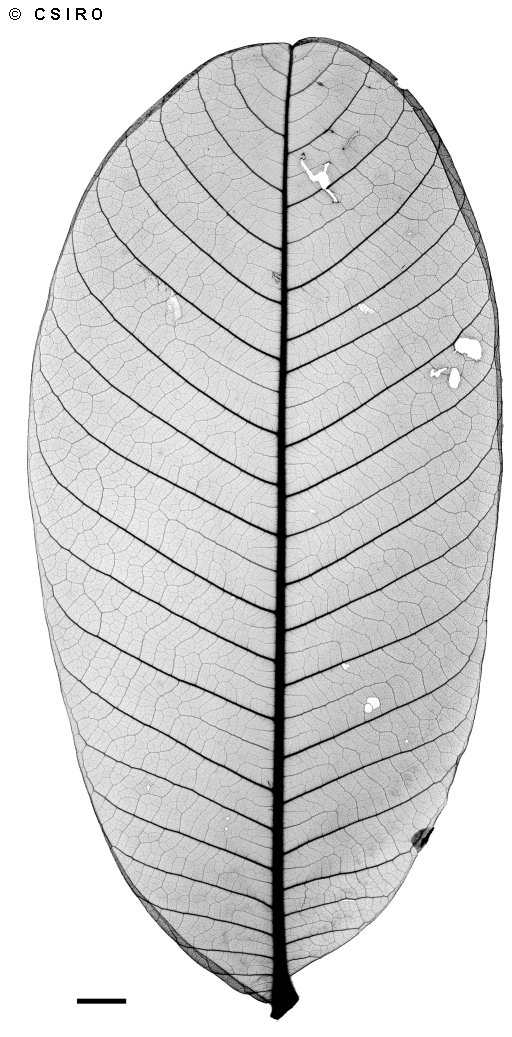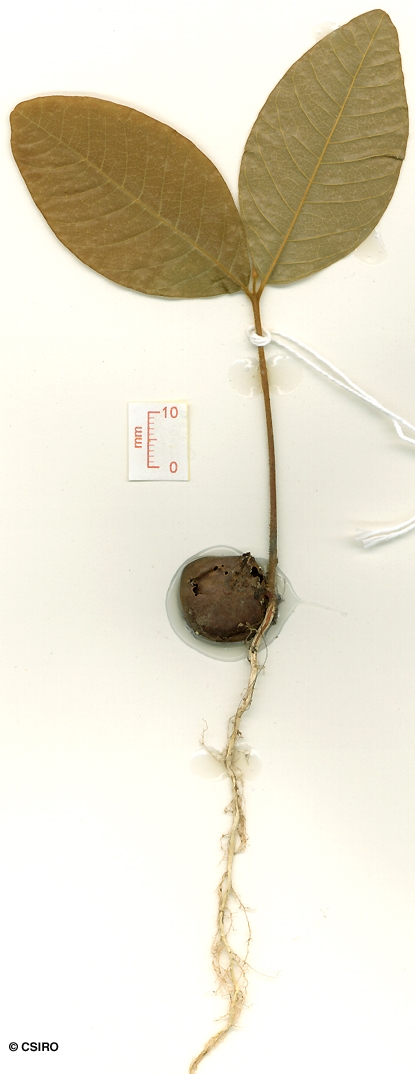Australian Tropical Rainforest Plants - Online edition
Diploglottis bernieana S.T.Reynolds






Reynolds, S.T. (1984) Austrobaileya 2(3): 328. Type: Cooper Creek, Parish of Alexandra, 16 deg 10 S, 145 deg 25 E, 24 Sep 1985, B.Gray 4159; holo: BRI; iso: QRS.
Giant Leaf Tamarind; Native Tamarind; Tamarind, Native; Bernie's Tamarind
Sapwood surface corrugated.
Inflorescence clothed in rusty hairs. Young inflorescence bracts 3-10 x 1-8 mm. Flowers 6-8 mm diam. Calyx shortly cupular, lobes 5, ovate, subequal, flat, not concave, each lobe about 4 mm long, densely clothed in dark reddish brown hairs. Petals obovate, about 5 mm long, each petal with 2 gland-like structures towards the base on the inner (adaxial) surface. Fifth petal slightly reduced. Stamens eight.
Seeds flat, about 15-20 mm wide, completely enveloped by the aril. Fruits hairy externally.
First pair of leaves elliptic or ovate, about 5.5 x 3 cm. Midrib raised and hairy on the upper surface. Underside of the leaf blade hairy. At the tenth leaf stage: simple leaf or leaflet of compound leaf broadly elliptic or obovate, apex rounded, margin recurved, hairy on the upper surface and along midrib and main lateral veins; leaflets with lateral veins very prominent on the lower surface, depressed on the upper surface, forming loops just inside the margins; terminal bud, stem and petiole densely clothed in long, brown hairs. Seed germination time 14 days.
The very large compound leaves and massive panicles of flowers make this a desirable small tree for tropical gardens.





